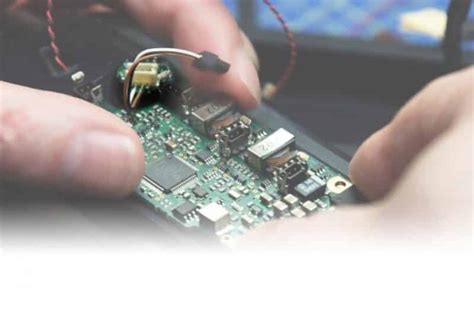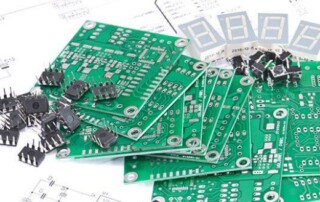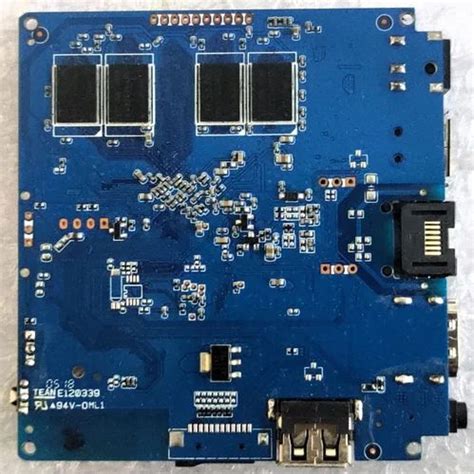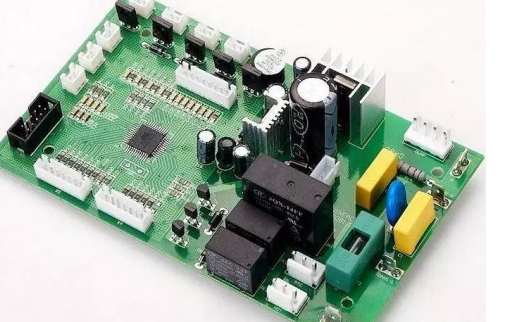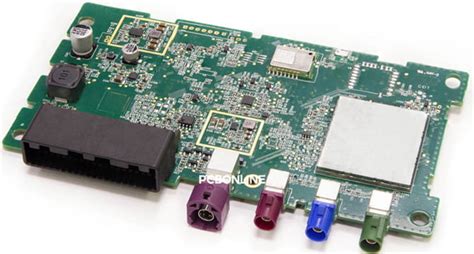Revolutionizing Electronics: Custom PCB Printing and Assembly Solutions
Key Takeaways
The landscape of custom PCB printing and assembly is rapidly evolving, driven by technological advancements and increasing market demands. Understanding this evolution is crucial for stakeholders in the electronics industry. Custom solutions enable manufacturers to create boards that meet precise specifications, thereby enhancing design flexibility and boosting overall efficiency. The integration of pcb assembly processes into manufacturing not only streamlines production but also significantly reduces costs associated with traditional methods. Utilizing advanced techniques in pcba can further accelerate time-to-market for products, an essential factor in the competitive tech environment. As industries continue to seek tailored solutions for unique electronic applications, the focus on cost-effective strategies becomes paramount, ensuring that businesses can adapt and thrive amidst ongoing challenges. Overall, embracing the transformative power of custom PCB printing and assembly will be key to future innovations in electronics.
The Evolution of PCB Technology: From Concept to Custom Solutions
The journey of PCB technology has transformed markedly over the years, evolving from traditional design methods to the innovative realm of custom PCB printing and assembly. Initially, printed circuit boards were produced using rigid techniques that limited design flexibility and adaptability. However, the advent of custom solutions has revolutionized this landscape, emphasizing the importance of tailoring PCBs to meet specific electronic requirements. Today, manufacturers can leverage advanced printing technologies that enable rapid prototyping and high precision, which not only enhances functionality but also facilitates complex designs that were once deemed impractical. The incorporation of pcba as a critical process in these developments further streamlines production workflows. As electronic devices continue to miniaturize and integrate multiple functions, custom PCB assembly provides the agility needed to keep pace with market demands. This evolutionary path has allowed companies to optimize costs while also accelerating their time-to-market for pioneering technologies. Overall, the evolution from concept to custom solutions in PCB technology highlights a significant shift towards more adaptable and efficient manufacturing methodologies that cater to an increasingly diverse array of electronic applications.
Advantages of Custom PCB Printing in Modern Electronics
The advancements in custom PCB printing technology have significantly transformed the electronics landscape, offering a myriad of advantages that cater to the evolving demands of the industry. One of the primary benefits is the increased design flexibility it provides. Engineers can create complex geometries and specific features tailored to their unique requirements, which was often challenging with traditional methods. This capability leads to designs that are not only innovative but also optimized for performance and functionality.
Additionally, custom PCB assembly processes streamline the manufacturing timeline. By integrating various components and technologies into a single workflow, manufacturers can enhance efficiency while maintaining high-quality standards. This whole process not only curbs production delays but also allows for more immediate troubleshooting and adjustments, resulting in a superior final product.
Moreover, employing pcba services can drastically reduce overall costs. The ability to produce small batches without incurring excessive costs allows businesses to test new concepts quickly and affordably while providing them with the opportunity to refine their products based on real-world feedback.
In summary, the blend of custom PCB printing and assembly solutions offers a compelling advantage—designs can be swiftly adapted and prototypes tested more economically than ever before. These innovations not only set the stage for future technology developments but also align perfectly with industry demands for rapid turnarounds and customized solutions.
| Benefits | Description |
|---|---|
| Increased Flexibility | Custom designs tailored to specific requirements |
| Enhanced Efficiency | Streamlined production processes |
| Cost Reduction | Affordable prototyping options |
| Speedy Turnarounds | Rapid adjustments based on user feedback |
Streamlining Production: The Role of Assembly in PCB Manufacturing
In today’s rapidly evolving electronics landscape, pcb assembly plays a crucial role in enhancing production efficiency and effectiveness. The integration of pcba processes not only facilitates the accurate placement of components on printed circuit boards but also ensures that the final product meets strict quality standards. Effective assembly methods prioritize precision and speed, allowing manufacturers to respond swiftly to market demands while minimizing errors. By leveraging advanced technology such as robotics and automated assembly lines, companies can achieve significant reductions in both labor costs and production times. Moreover, innovative techniques such as surface mount technology (SMT) enable the accommodation of complex circuit designs, making custom PCB printing more versatile than ever before. This alignment between pcb assembly and design efficiency fosters a streamlined workflow, enabling engineers to bring their innovative concepts from design to production with unparalleled ease. Ultimately, a robust approach to assembly not only optimizes operational capabilities but also enhances the overall quality and reliability of electronic products in an increasingly competitive field.
Cost-Effective Strategies for Custom PCB Development
In the dynamic world of electronics, developing custom PCBs can often pose substantial financial challenges; however, implementing cost-effective strategies can mitigate these issues significantly. One effective approach is to leverage advanced pcb assembly techniques that optimize production efficiency while minimizing waste. By utilizing smart design tools that facilitate design for manufacturability, companies can reduce complexities within the layout, leading to easier and more affordable manufacturing processes. Additionally, investing in technology such as automated pcba systems allows for consistent quality control and lower labor costs.
Moreover, collaborating with suppliers who specialize in bulk material sourcing can lead to reduced costs without compromising on quality. “Always aim to standardize components where possible; this not only simplifies assembly but radically cuts down expenses,” suggests industry expert Jane Doe. Implementing these strategies not only elevates the overall performance of custom PCBs but also accelerates the development cycle, positioning organizations advantageously in an ever-competitive market. By prioritizing cost-effective solutions in custom PCB development, companies are not just saving money—they are paving the way for innovative electronics that meet modern demands efficiently.
Accelerating Time-to-Market with Innovative Assembly Techniques
In the fast-paced world of electronics, the need for PCB assembly is paramount in ensuring that new technology reaches the market swiftly and effectively. Innovative techniques in PCBA have dramatically transformed the traditional assembly process, allowing for greater efficiency and precision. By employing advanced automation and sophisticated equipment, manufacturers can minimize human error and speed up production timelines. This not only reduces lead times but also lowers operational costs, making the entire process of custom pcb assembly more economical. Furthermore, the integration of rapid prototyping tools enables engineers to create and test prototypes more swiftly, ensuring that any issues are addressed before full production begins. By embracing these innovative assembly techniques, companies can not only accelerate their time-to-market but also improve product quality and reliability. Ultimately, this enhances their competitive edge in a landscape where innovation and speed are critical to success.
Design Flexibility: Tailoring PCBs for Unique Electronic Applications
The ability to customize PCBs to meet specific project requirements is revolutionizing the landscape of electronics. This design flexibility allows engineers and designers to craft solutions that cater directly to unique electronic applications, enhancing both functionality and performance. Whether it’s through modifying the layout, optimizing material choices, or integrating complex features into the design, custom PCB printing enables a higher degree of innovation. For instance, in high-performance sectors like automotive and medical devices, tailored pcb assembly processes ensure that every component is precisely placed for maximum efficiency. Moreover, as manufacturers adopt advanced techniques in pcba, they can create smaller and more intricate designs without sacrificing reliability or cost-effectiveness. This shift not only leads to groundbreaking technology but also empowers businesses to respond swiftly to market demands, positioning themselves competitively within their industries. As custom PCB solutions continue to advance, the scope for design innovation expands exponentially, paving the way for next-generation electronic devices that meet diverse consumer needs.
Future Trends in Custom PCB Printing and Assembly Solutions
As the landscape of electronics continues to evolve, the future of custom PCB printing and assembly is poised for some remarkable transformations. With the demand for more compact, efficient, and multifunctional devices, the development of PCB assembly processes is likely to advance significantly. One emerging trend is the adoption of advanced materials that not only enhance design flexibility but also improve performance characteristics. For instance, using flexible substrates can lead to innovative designs that conform to diverse applications. Moreover, as Internet of Things (IoT) devices proliferate, manufacturers will increasingly focus on optimizing PCBA processes to support miniaturization without sacrificing functionality.
Another trend includes leveraging automation and artificial intelligence in the pcb assembly process. This integration can streamline production while ensuring precision and reducing human error, thereby enhancing overall efficiency. Furthermore, adopting sustainable practices is becoming important as industry stakeholders respond to environmental concerns; this shift may involve using eco-friendly materials and optimizing manufacturing waste. In this context, technologies such as additive manufacturing are likely to play a significant role, allowing for rapid prototyping and reduced lead times for custom PCBs. Such innovative solutions will not only address current market demands but also lay a foundation for future advancements in electronic design and production capabilities. Overall, these trends signal a dynamic future in custom PCB printing that promises enhanced performance, sustainability, and user-centric designs.
Conclusion
In the evolving landscape of electronics, custom PCB printing and assembly solutions play a pivotal role in driving innovation. The integration of pcb assembly processes has not only streamlined production but also enhanced the flexibility of electronic designs. With the ability to tailor printed circuit boards (PCBs) to meet specific requirements, manufacturers and developers can create more efficient products. The advancement in pcba technologies has significantly reduced costs and minimized lead times, allowing organizations to bring their groundbreaking technologies to market faster. As the industry continues to embrace these custom solutions, one can expect a future where adaptability and efficiency will be key drivers of success in electronics manufacturing. With ongoing advancements, the promise of making unique designs accessible will keep transforming the technological landscape, ensuring that custom PCB printing and assembly solutions remain at the forefront of this evolution.
FAQs
What is custom PCB printing?
Custom PCB printing involves the creation of printed circuit boards tailored to specific design requirements. This process allows for customization in layout, size, and configuration, enabling unique solutions for diverse electronic applications.
How does PCB assembly (PCBA) work?
PCB assembly, or PCBA, is the process of attaching electronic components to a printed circuit board. This can include soldering components and ensuring all connections are secure and functional. The assembly process is crucial for ensuring the reliability of the final electronic product.
What are the advantages of using custom PCBs?
Utilizing custom PCBs offers numerous benefits, including enhanced design flexibility, potential cost savings, and improved performance tailored to project needs. Custom solutions make it easier to implement innovative designs that stand out in a competitive market.
How can custom PCB solutions reduce costs?
By optimizing the design and utilizing efficient PCB assembly techniques, companies can minimize material waste and labor costs. Custom PCBs help in reducing production lead times as well, which further contributes to overall cost efficiency.
What is the impact of innovative assembly techniques on time-to-market?
Employing innovative PCB assembly techniques streamlines production processes. This can significantly decrease time-to-market by reducing bottlenecks and allowing for faster prototyping and delivery of products to consumers.


